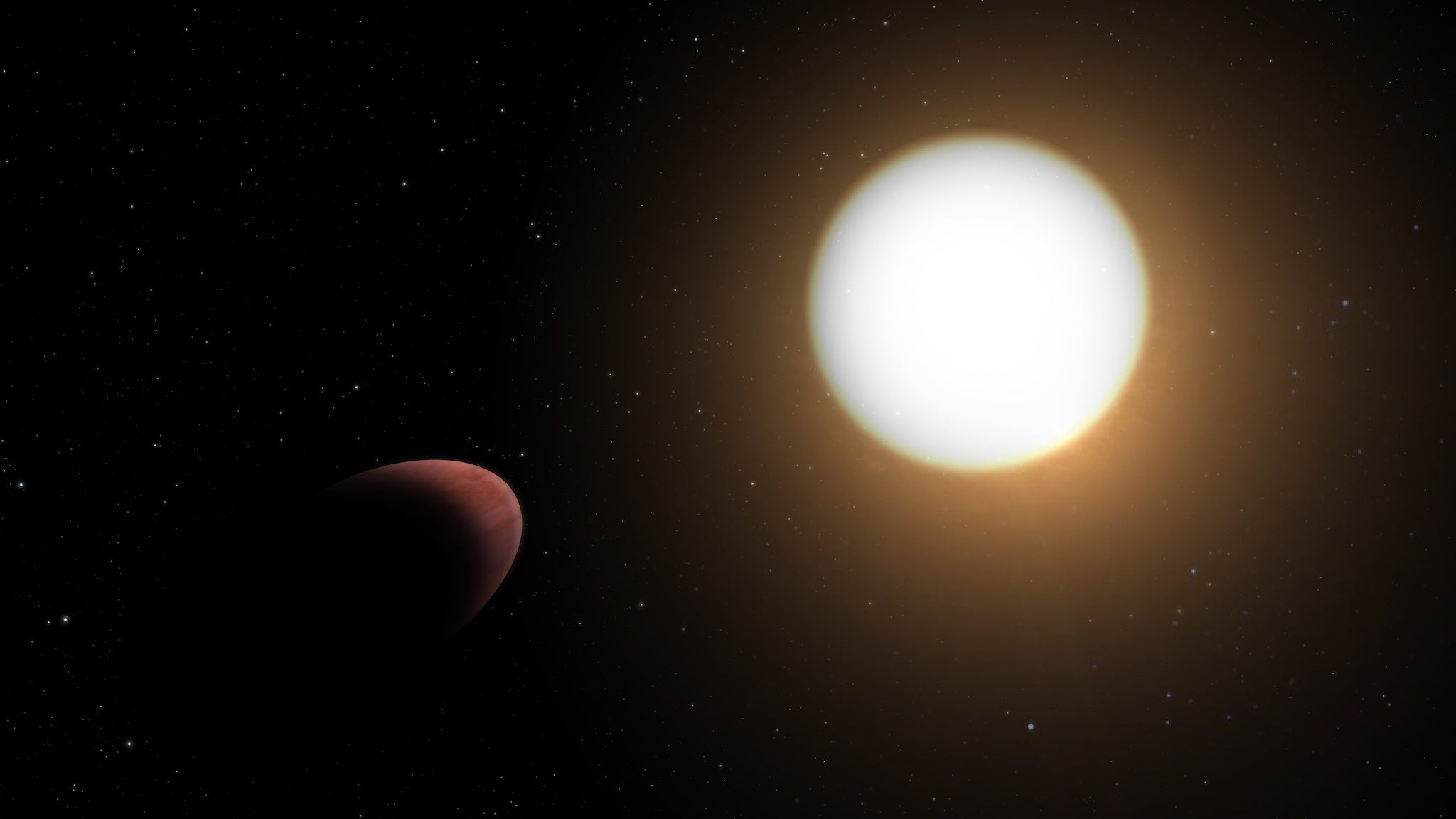Astronomers find ‘deformed’ planet that isn’t round for the first time

Your support helps us to tell the story
From reproductive rights to climate change to Big Tech, The Independent is on the ground when the story is developing. Whether it's investigating the financials of Elon Musk's pro-Trump PAC or producing our latest documentary, 'The A Word', which shines a light on the American women fighting for reproductive rights, we know how important it is to parse out the facts from the messaging.
At such a critical moment in US history, we need reporters on the ground. Your donation allows us to keep sending journalists to speak to both sides of the story.
The Independent is trusted by Americans across the entire political spectrum. And unlike many other quality news outlets, we choose not to lock Americans out of our reporting and analysis with paywalls. We believe quality journalism should be available to everyone, paid for by those who can afford it.
Your support makes all the difference.Astronomers have found a “deformed” exoplanet shaped like a rugby ball for the first time.
The planet has been stretched out and squashed down by the tidal forces between it and Wasp-103, the distant star around which it orbits. That star is about 200 degrees hotter and 1.7 times bigger than our Sun.
The unusual planet known as Wasp-103b was spotted using new data from Cheops, the European Space Agency’s mission to find exoplanets, which was combined with existing information from the Hubble and Spitzer space elescopes.
Scientists find such exoplanets by looking for “transits”, which happen as they move in front of their star and cause a dip in the light that comes from it. From the nature of that transit, researchers can understand the size and other details about the planets.
But using Cheops, astronomers were able to spot that signal in more detail. From that, they were able to work out the squashed shape of the planet, and other details about it.
“It’s incredible that Cheops was actually able to reveal this tiny deformation,” said Jacques Laskar of Paris Observatory, Université Paris Sciences et Lettres, and co-author of the research.
“This is the first time such analysis has been made, and we can hope that observing over a longer time interval will strengthen this observation and lead to better knowledge of the planet’s internal structure.”
That data also showed that the planet is “inflated”. While it is roughly 1.5 times the mass of Jupiter, it has twice the radius, suggesting that it is inflated, probably partly because it has been heated by its star.
Researchers hope that further work – including from the recently launched James Webb Space Telescope – could provide yet more certainty on those calculations, and some indication of how the planet came to be that way.
The research is described in an article ‘Cheops reveals the tidal deformation of WASP-103b’, published in Astronomy & Astrophysics.
Join our commenting forum
Join thought-provoking conversations, follow other Independent readers and see their replies
Comments